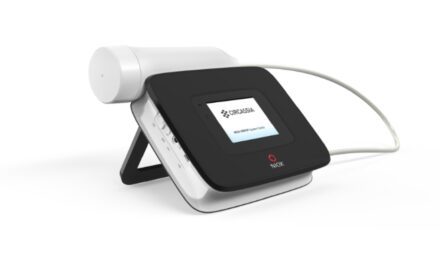Did you know the origins of spirometry and pulmonary function testing can be traced back to ancient Rome’s physician, writer, and philosopher Claudius Galen?

Greek physician, writer, and philosopher Claudius Galen served as surgeon to a school of gladiators and later as physician to emperor Marcus Aurelius, but his main interest lay in clinical observation. After witnessing certain behaviors, he would devise a unique treatment. For instance, he determined that an individual with breathing problems due to a weak chest would benefit from singing exercises.
Somewhere between 129 and 200 AD, Galen conducted an experiment in which he had a boy breathe in and out of an animal bladder, a primitive spirometer, to assess how much air his lungs could hold. His observations led him to conclude that the volume of gas did not change over time.
History gives little indication of other such experiments until the 1600s when Giovanni Alfonso Borelli, Italian physiologist, astronomer, mathematician, and physician, devised his own “inspirational” experiment. He had his subject suck a liquid up a tube while his nostrils were blocked and then measured the volume of air. His decision to occlude the nostrils proved to be key in obtaining accurate results and is integrated into today’s devices.
Jump ahead to the early 1700s and British physician and scientist James Jurin joined Galen and Borelli in the exploration of spirometry when he also recorded air measurement volumes using a bladder. Approximately 100 years later, scientist Stephen Hales confirmed and further defined the measurements of lung volumes and capacities. Add John Abernethy—doctor and teacher of anatomy, physiology, and pathology—to the list of early contributors to the practice of spirometry. By exploring the concept of oxygen depletion, he was better able to understand lung function.
A flood of contributions to spirometry began in the 1800s when Humphry Davy used a gasometer to conduct his measurement experiments. A promising painter and poet, he turned to science and joined the Pneumatic Institution at Bristol, England, in 1798 at the age of 20. His experiments with lung volume benefit exercise physiologists who use his findings regarding oxygen consumption to measure energy expenditure in the body.
In 1813, Edward Kentish and Charles Turner Thackrah advanced the study of respiratory volumes with their pulmometer—a jar inverted in water. Some 30 years later, German physician and professor of theoretical medicine and physiology Karl von Vierordt explored volumetric parameters using an expirator. His findings regarding residual volume and vital capacity have endured and are used today in spirometry.
The most significant breakthrough was an invention from John Hutchinson. Dubbed the inventor of the spirometer, he developed a water spirometer that diagnosed a major health problem of the time, phthisis, which reduces vital capacity by destroying lung tissue.
During the next 20 years, other names joined the growing list of scientists refining and redesigning the spirometer. M. Alton Wintrich conducted tests on more than 4,000 individuals and created an easier to use model. E. Smith developed a portable spirometer, and British physician and physiologist Henry Hyde Salter enhanced the spirometer when he added a kymograph, a device that records pressure.
T.G. Brodie first used a dry bellow wedge spirometer, precursor to the Fleisch spirometer, in 1902. H.W. Knipping and Brauer introduced ergospirometry, a diagnostic procedure that continually measures respiratory and gas metabolism during ergometer exercise.
Today’s devices have proven to be a valuable clinical tool for screening, determining the efficacy of medication, and monitoring postoperative patients as well as those with chronic pulmonary conditions. Moreover, current types are more manageable—Hutchinson’s model was as tall as an adult patient. Models range from incentive spirometers, whole body plethysmographs, and pneumotachometers to fully electronic spirometers, peak flow meters, and windmill-type or Spiropet spirometers.
In 1996, the Spirometer Committee of the National Lung Health Education Program (NLHEP) encouraged more widespread use of spirometry to diagnose and monitor disease, particularly chronic obstructive pulmonary disease. Several global companies manufacture spirometers including Jones Medical Instrument Company, Medical International Research USA, MCG Diagnostics, ndd Medical, nSpire Health, and Smiths Medical.
While the use of spirometry in respiratory and pulmonary departments is fairly common, it has yet to gain widespread acceptance as a standard of care. Unlike ECG or sphygmomanometers, today spirometers are found in only 20% to 30% of primary care physician offices—a fact that could be an even greater mystery than tracing the origins of this important device. RT
Phyllis Hanlon is a contributing writer for RT. For further information, contact [email protected].









